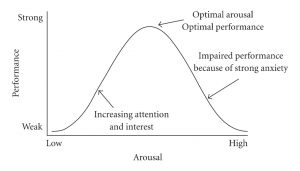Memory – Eye Witness Testimony
Memory – Eye Witness Testimony
EYEWITNESS TESTIMONY
Leading Questions – Loftus Parmer study
Aim: to test the effect of leading questions on a person’s recall
Method: – split participants into 3 groups
– ppts watched a short film of a traffic accident
– they were then asked questions about the film
– all questions were same except the one about the speed of the cars when the accident happened
– IV = the verb that was used (hit / smashed)
– control group not asked this question
Results: – those is ‘smashed’ group reports seeing the car go faster than those in the ‘hit’ group
– mean estimated speed: ‘hit’ = 34mph, ‘smashed’ = 41mph
– seen broken glass? (there wasn’t actually any broken glass) ‘hit’ = 32%, ‘smashed’ = 14%, control group = 12%
Conclusion: – those that were asked about the car smashing were more likely to report having seen the broken glass
– control group hadn’t been asked about the speed of the car, but 12% still reported seeing glass – due to misleading questions
Evaluation:
| STRENGTHS | WEAKNESSES |
| Generalisable – many students were used – generalisable to students | Not generalisable – only students were used – not generalisable to everyone |
| Lab experiment – highly controlled conditions – could be replicated – produced quantitative data | Hasn’t been replicated with broken glass |
| Applicable – car accidents are real life scenarios Applicable to the police force – questioning / interviewing |
Lacks ecological validity – can’t be generalised beyond the present situation; it was specific to a car accident Not valid – don’t always have to watch a clip of a car accident |
| Face validity – tests the aim & what it does | Deceit – students didn’t know they were participating |
| Didn’t cause psychological distress | Could cause psychological harm if they have been in a car accident before |
Why do Leading Questions affect EWT?
Response bias – the wording of the question has no real effect on the participant’s memories, but just influences how they answer
Substitutional explanation – the wording of a leading question actually changes the participant’s memory of the film clip
Post Event Discussion
Occurs when there is more than one witness to an event
Witnesses can discuss what they have seen with co witnesses or with other people
Fiona Gabbert et al:
– studied ppts in pairs
– each watched a video of the same crime, but films from different points of views
– 71% recalled aspects they had not seen on the video, but in the discussion instead
– witnesses change conform and go along with each other, to win social approval or because they believe the other witnesses are right
Evaluation of EWT
Useful real life applications:
– misleading information has practical uses in the real world
– Loftus believes that leading questions can have such a distorting effect on memory
Tasks are artificial:
– watching a car accident in a clip is different to real life accidents – more stressful during a real life accident
– studies that use artificial tasks, may tell us very little about how leading questions affect EWT in reality
Individual differences – older people are less accurate than younger ones when giving eye witness reports
Effect of Anxiety
Johnson and Scott
- Found that when people have higher levels of anxiety, they are less likely to focus on the event, and therefore give inaccurate eye-witness testimonies
- Lab experiment – participants told to wait in reception – receptionist who was seated nearby excused herself and left the participants alone
- 2 conditions – ‘no weapon condition’ & ‘weapon condition’
- ‘No weapon condition’ – participants overheard a conversation in the lab about equipment failure – an individual (target) left the lab and walked passed the participant holding a pen, with his hands covered in grease
- ‘Weapon condition’ – participants overheard a heated exchange and the sound of breaking glass & crashing chairs – followed by an individual (target) running into the reception area, holding a bloodied letter
- Both groups then shown 50 photographs and asked to identify the person who had left the lab – ppts informed that the suspect may or may not be in the photo
- Those who had witnessed the man holding a pen correctly identified the target 49% of the time, compared to only 33% of the time where the target was correctly identified by those who had witnessed the man holding a knife
- Conclusion: those who were exposed to the man holding the knife had higher levels of anxiety, and were more likely to focus their attention on the weapon and not on the face of the target
Exam Questions
Q1) Explain what is meant by the term post-event discussion (2 marks)
Q2) Briefly outline one study that has investigated the influence of misleading information on eyewitness testimony (3 marks)
Q3) Give an example of a leading question and explain how this might affect the accuracy of eye-witness testimony (3 marks)
Q4) Explain how post-event discussion may affect the accuracy of eyewitness testimony (3 marks)

